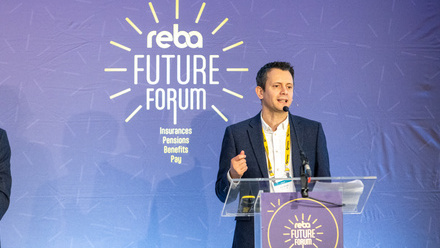Be honest about the role of benefits, says Howden’s Matthew Gregson
Benefits don’t operate in a vacuum: your business conditions all feed in to how you build and communicate your benefits.
At REBA’s recent webinar, Delivering great benefits design from strategy to tactics, supported by Howden Employee Benefits & Wellbeing, Gregson shared his thoughts on why your business context has to inform your benefits strategy.
“What you’re trying to achieve as a business, your constraints, where you are in the cycle, the promises you can make to employees – that business context has to inform why your benefits are the way they are,” said Gregson.
Communication disconnect
Having worked with numerous clients in this area, Gregson explained how some companies are satisfied with aligning their benefits offering to the sector they operate in. However, others might want to offer more, for example, by aiming for an upper-quartile benefits and wellbeing programme.
“The ability to be honest with employees about what role benefits play within your employee value proposition (EVP), and why they may be richer or poorer than those of the competition is key,” said Gregson. “But, if you can’t describe them in the same way in the boardroom that you want to describe them to people on the streets, then, fundamentally, there’s a disconnect.”
Executives often want to dress things up a particular way and want to justify why investments are made in a certain way. Being asked to present that to employees in a different manner is unlikely to result in success. “So, even if you don’t have the budget to improve benefits, the business context and understanding what value is offered elsewhere, and why you’re focusing on that, needs to be part of your message,” he added.
“If there’s still a disconnect, take that feedback into the decision-making cycle again and say that, in spite of that business context and in spite of the other elements of our EVP, that’s not cutting it, and we’re going to lose the war for talent if we don’t address this gap.”
Flex your benefits
“Overall, you've got to get your approach to the big five right,” said Gregson. “Annual leave, retirement, death, disability and health – whether it's a one-size-fits-all or hierarchical scheme, you need to make sure that all five of those elements are suitably addressed across your entire workforce. And once you’ve properly addressed the big five, I’d think about moving to flex.”
The five key elements of any benefits strategy:
1. Annual leave
2. Retirement
3. Death
4. Disability
5. Health
He went on to explain that, rather than overfunding certain benefits, like medical cover or pension contributions for those not wanting or needing them, surplus funds could be put into flex, because you’re likely to meet significantly more needs that way.
This message can also be seen in REBA’s recent Benefits Design Research 2023 – Adapting to external and internal business change research report, in which the number one goal of most respondents for the next two to three years was improved choice and personalisation.







